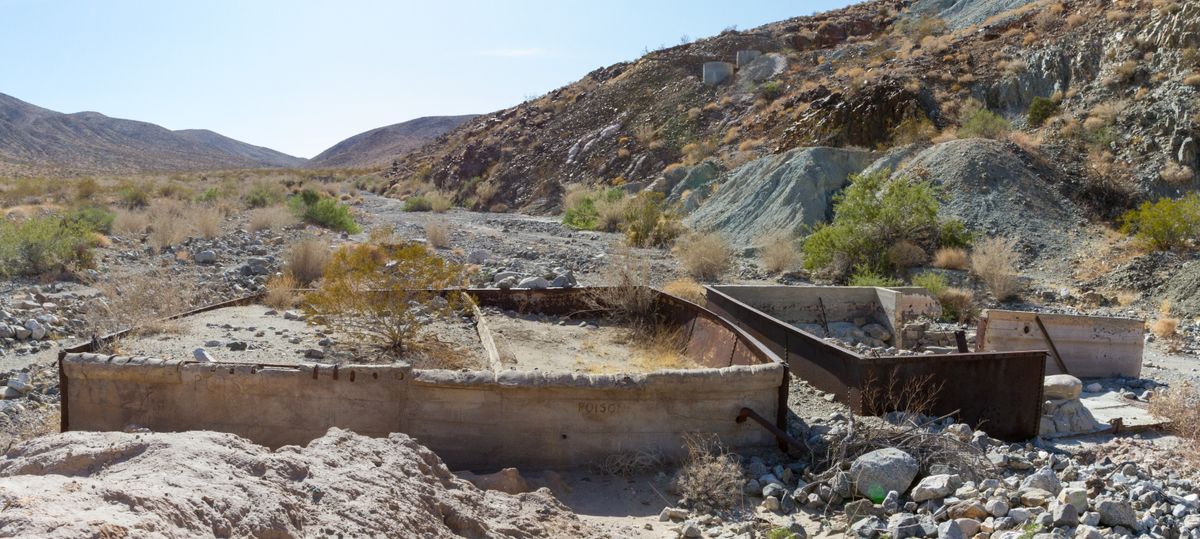James “Chuckwalla Jim” Wilson discovered a rich gold-bearing outcrop of rock in this canyon of the Hexie Mountains in 1901. He called it the "El Dorado" (also spelled Eldorado) and transported small batches of ore on burros to the mill at Pinyon Well or all the way to an arrastra in Twentynine Palms.
Read next

Pine City Overlook
Pine City was never a city. Instead, it's a peaceful collection of pinyon pines and junipers scattered among granite boulder formations at 4,200 feet elevation in Joshua Tree National Park. This unusual concentration of drought-resistant conifers in the otherwise sparse desert landscape likely inspired early miners to

Perilous Portal Pictographs

